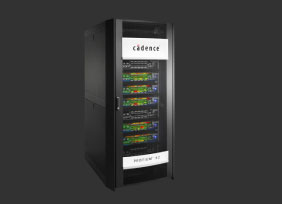Prototyping
What Is Prototyping?
The word “prototype” has Latin origins, where proto means original and typus means a model or a form. So, a prototype is a pre-production model that helps review the design with real conditions. The primary purpose of prototyping is to simulate the end product and refine and validate the design and functionality per the end user’s expectations. It helps to test the concept early in the design cycle and saves cost and time.
Prototyping for system-on-chip (SoC) design involves developing digital models to test the performance of an SoC— before creating the SoC hardware. In some ways, it’s similar to other prototyping practices, such as aerodynamic design. A manufacturer doesn't have to build a full-scale model of a car or a plane before testing how well it will perform in different winds and at different speeds. Computer modeling can approximate aerodynamic load long before the first rivet — or even a chunk of modeling clay — is put in place. Similarly, prototyping SoC design can answer key performance questions and pave the way for concise functionality testing long before designers etch the first piece of silicon.
Why Is Prototyping for SoC Design Important?
System-on-chip (SoC) uses a combination of hardware and embedded software to provide the specified functionality. It is always challenging to verify and validate the complete system the hardware and software bring together. Usually, considerable costs and the prospect of increasing the time-to-market (TTM) make it hard to address hardware bugs in the chip. To meet today's competitive TTM requirements, as much software development as possible must be completed before the hardware is available.
Prototyping with FPGAs (field-programmable gate array) is critical for many projects because they scale to large designs and run at speeds enabling software to be run. Using FPGA-based Prototyping:
- Software can be developed and tested before silicon tapeout
- Functional and performance bugs are found and fixes tested
- Quality improves while reducing design costs and schedules
- Profit improves by meeting or beating TTM requirements
Prototyping with Cadence
With Cadence’s FPGA-based prototyping systems, you get all the tools you need to overcome the above challenges and many more. For example, with the Protium X2, you get:
- High-performance, scalable hardware from millions to billions of gates
- Full-flow software stack for fully automated compilation for fast prototype bring-up
- Advanced features for debugging, including C-DPI (direct programming interface)
- Design memory backdoor access for accelerated software development and debugging
- Multi-user mode for parallel hardware regressions and software development work
In addition, with Cadence, you get interface support, which consists of a full portfolio of physical and virtual support systems. For instance, you get the following:
- SpeedBridge Adapters — At-speed, physical protocol interface solutions for efficient driver- and application-level testing through Protium prototyping systems and Palladium emulation
- Accelerated VIP — High-performance protocol VIP for verifying the peripherals and interfaces of your SoC in software environments
- Memory models — Portfolio of industry-standard memory models
- Protium daughtercards — Physical connections for direct access to target hardware platforms, including hardware testers
- VirtualBridge Adapters — Interfaces to connect designs to virtual CPU models allowing software developers to access richer debug environments than hardware-centric interfaces
Learn More About Cadence's SoC Prototyping Solutions
- Cadence gives you all the tools you need for a flexible, scalable prototyping system. You have what you need to cut costs from base technologies to physical and virtual support systems while boosting speed and functionality. Learn more about how Cadence's SoC prototyping can help you reduce software design costs today.
